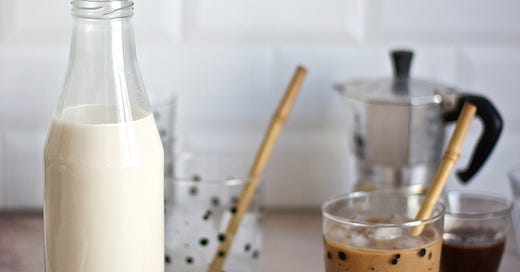My favourite kitchen tools - from the obvious to the slightly unexpected and niche ...
... plus my April round-up & a recipe for Toasted Cinnamon and Brown Rice Horchata
Hello, and welcome to Newsletter No 27 here on Substack! Thank you for stopping by. If you are already subscribed, thank you for supporting my work, it means the world to me! If not, grab a seat if you are interested in recipes as well as tips and tricks to make the most of our increasingly eclectic pantries and a good dose of my at times random musings about all things food - and make sure you hit that subscribe button if you don’t want to miss any future posts!
This week I want to share my favourite kitchen tools with you - those tools and equipment that support all my fun baking and dessert experiments. These range from the probably seemingly obvious, like a standmixer, to the slightly unexpected or niche (hotel shower caps)! The list is by no means exhaustive but I’ll share why I consider each tool or piece of equipment essential for how I like to bake.
In addition, below you will also find my April round-up with everything I enjoyed reading, baking, cooking and eating/drinking! A…
Keep reading with a 7-day free trial
Subscribe to Real Simple Food to keep reading this post and get 7 days of free access to the full post archives.




